Storage
Large Storage Organization
Bosch/Sortimo
I recently (July 2023) acquired a few pieces of the Bosch/Sortimo products, and am just beginning to organize around them. I've created another page that covers this more in-depth.
IKEA ALEX
I'm a pretty big fan of the IKEA ALEX series of storage. I have several of the 9 drawer units and one of the 5 drawer units. They go together pretty quickly, and are mildly durable.
Government Surplus Bookcases
I have some great military surplus metal bookcases from my partner's old place, and they have a glass door that slides up and out of the way. Definitely recommend searching auctions and surplus sales to find something. These are much deeper than your typical bookcase, which makes them even more useful, and the top can hold a cheap-ass fridge.
Small Parts Storage
One of the things you'll accumulate a huge number of is small parts. Whether it's a screw, an IC, or a bunch of tiny SMD resistors, you need to figure out a way to keep them organized. For a lot of people, this means drawer systems, but due to the arrangement and design of my work area, these are not feasible for me.
Plano ProLatch
I'm a pretty big fan of Plano's ProLatch series of storage. They're designed for fishing lures, but are well made, the lid seals pretty tight to the top of the dividers (reducing risk of parts moving around), and best of all, inexpensive. And they're even made in the United States. I use the following models for various purposes:
For each box, I put 2 large labels (see Labeling) on it with a top-level description of what is in the box (e.g., "M3/M4/M5/M6 SS Hex Screws" for stainless-steel M3-M6 screws). One goes on the long edge (with the latches), and the other on the short edge for better discovery when shelved.
In addition, I use 3x5 index cards to describe the organization within the box's many compartments. These are just handwritten and then places in a small holder on the front (Amazon), which lets me read it and update it as necessary. You can see an example here:
Updated Strategy
I've written about my new approach here, and I think it's a major improvement. Give it a read.
AideTek
For small surface mount parts, I'm a big fan of the Aidetek 144 compartment SMD storage enclosure, shown below:
They make these in a bunch of configurations. They also make nice ESD-safe boxes for a little more money that are perfect for things that need a little extra protection, such as ICs and transistors.
Liquid Storage
There are two different ways I like to store liquids, depending on how they'll be used. The first is to use wash bottles made out of LDPE for things that get used in more of a "squirt here and there", like wetting a sponge, or rinsing something. For everything else, I keep it in either 1oz (28ml) or 2oz (56ml) clear boston round bottles with integrated eyedroppers.
Cheap Fridge
Sometimes you need to store things below normal room temperature. Some examples include solder paste, flux, and the like. Since these are all quite toxic, you really shouldn't store them in the same place you keep your dinner, so I've "invested" in an inexpensive Crownful 4L/6 can fridge pictured here. It uses a Peltier plate to cool it, so it's not super efficient, but it's also tiny. I just wish I'd seen it in other colors before buying the boring white.
If you use one of these, I've designed a replacement shelf that you can 3D print. It will hold a few syringes of flux/paste and some tubs of paste as well.
Sand Paper & Emery Cloth
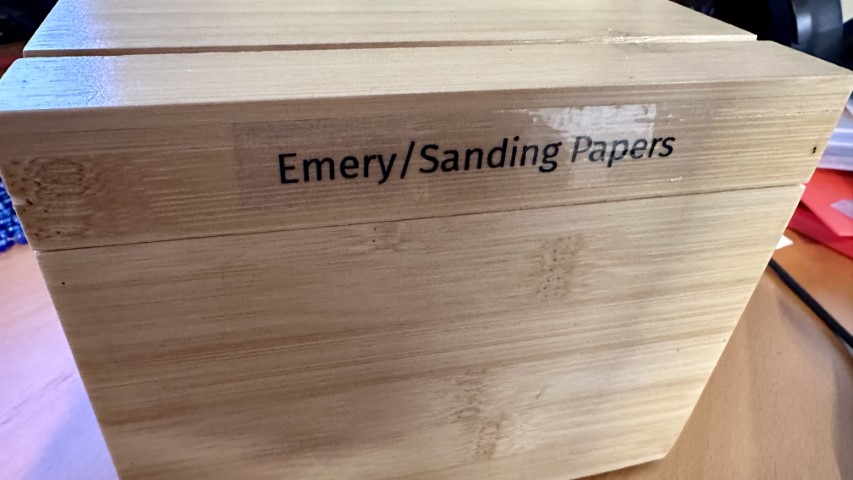
I was watching a video from Blondihacks (Quinn), who was talking about Emery paper, and had a quick tip to organize all the different grits that you need to keep around: a recipe box. A quick search on a random bookseller turned up one that seems to be basically identical to the one she was using. The 4x6" size is absolutely perfect for my use case where I'm typically working on small things and don't need larger sheets very often.
Using my label maker, I just made a quick set of labels.
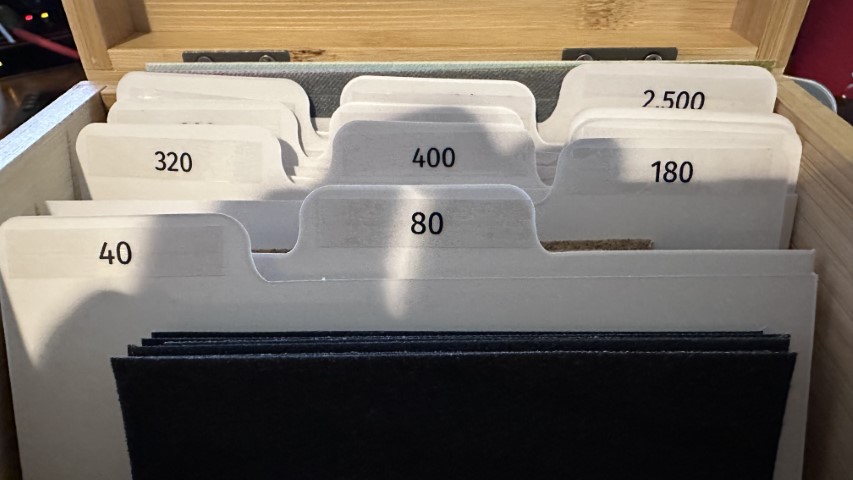
Turns out I didn't have enough divider cards for all the different grits I have, but I was able to make it work. For now, I just folded up the typical 3x9" sheets that we get in the US, and can tear them as I need them. There's no accuracy needed. The emery cloth, however, I did cut with a box knife.
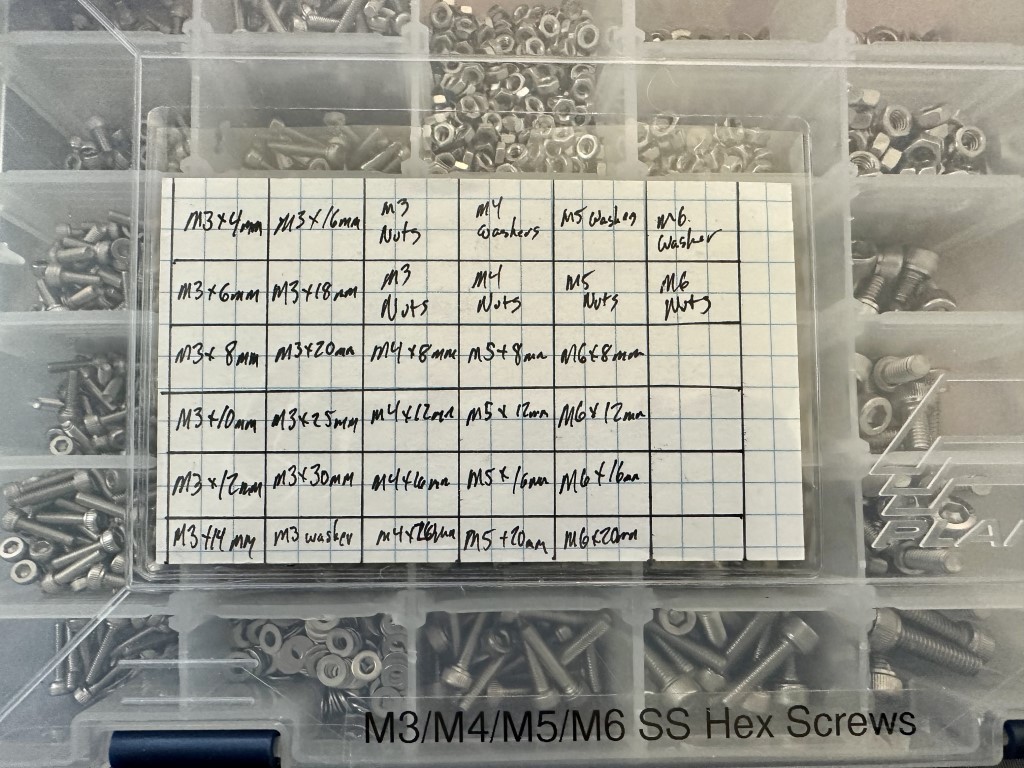
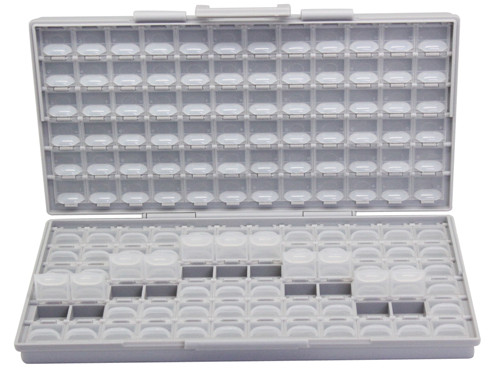
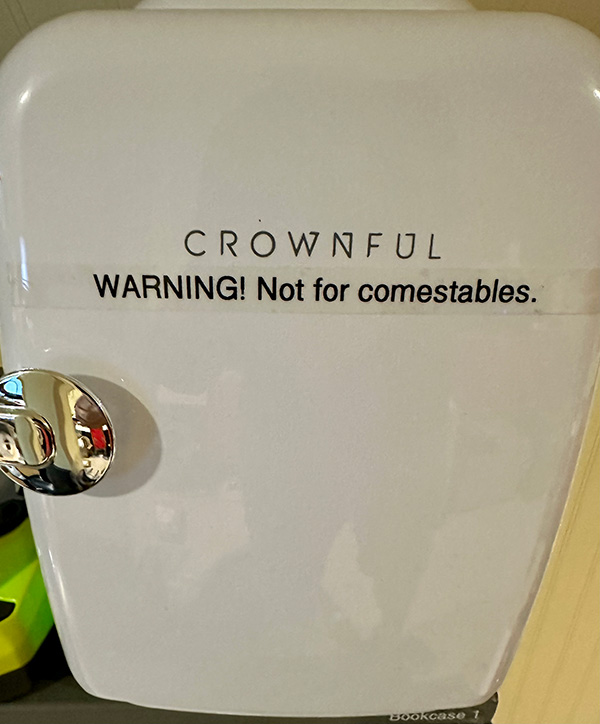
Comments or Questions?
If you have any comments, questions, or topics you'd like to see covered, please feel free to either reach out to me on Mastodon (link below) or open an issue on Github.